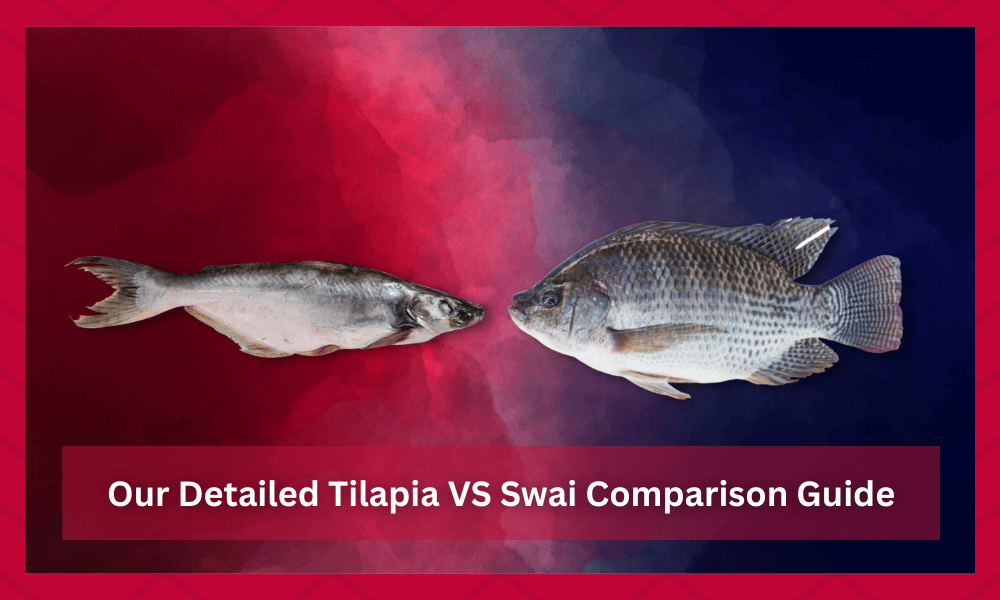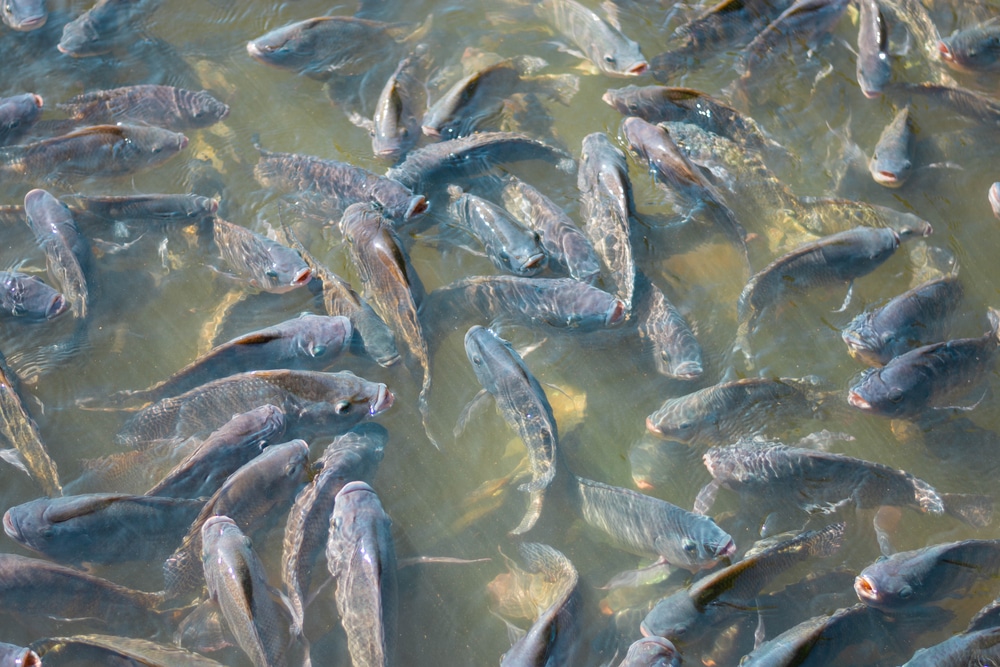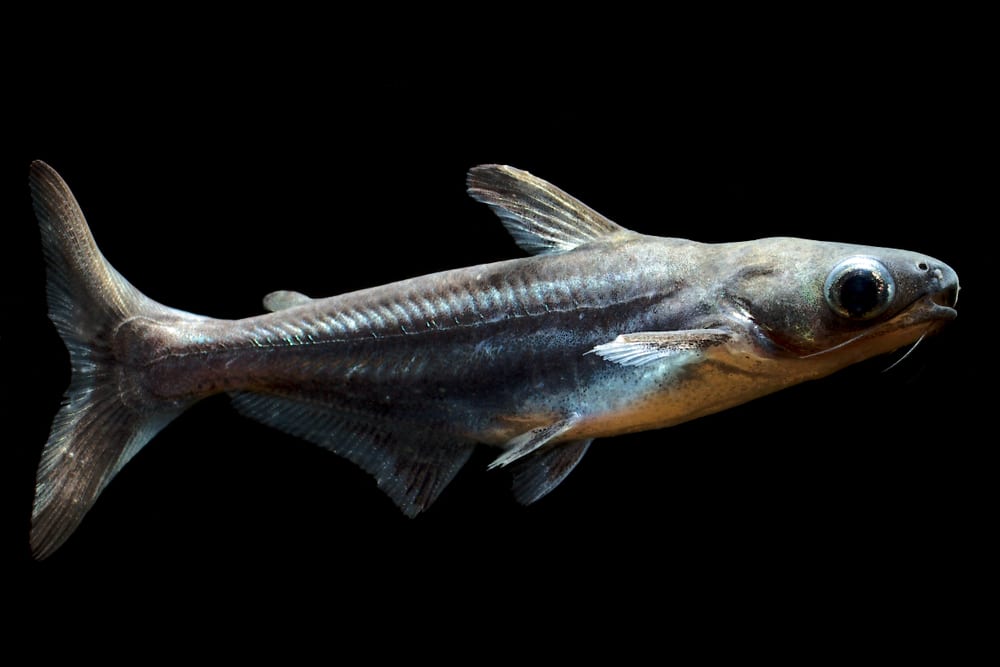
There are many different kinds of foods that are very popular in some areas but shunned upon in others. This goes for just about even the most popular options that come to mind, just as bacon, pork, beef, and much more.
However, one type of food, in particular, that is regularly eaten in just about every single part of the world is fish. There are thousands of species of fish out there, and they all have their unique distinctions.
We’re going to be comparing two of these in our Tilapia vs Swai guide today.
Whenever you’re out to have food or even making it at home, getting the best meal possible is always preferable. However, before you can do so, it’s important to do some research.
That’s because this research brings knowledge regarding all the best options.
This ultimately helps you decide which options out there are the best ones for you. With all of this said, research is exactly what we’re here to help with within the form of our Tilapia vs Swai comparison article.
Read this if you wish to learn more about the differences between these two.
Going through the information should help you in understanding how the varieties are different from each other. This should also teach you the aspects these fish vary in.
As long as you have all this information with you, making a decision should be a lot easier.
Our Detailed Tilapia VS Swai Comparison Guide
| Type Of Fish | Tilapia Fish | Swai Fish |
| Region Of Fish | Found All Around The World | Specific To Southeast Asia |
| Health and Safety | Not Safe To Eat | Not Safe To Eat |
| Taste Of Fish | Mild In Comparison | Sweet and Mild Flavor |
| Texture Of Fish | Flaky Texture | Flaky Texture |
| Nutritional Values | High In Protein | High In Protein |
1. Their Regions
The first difference that comes into play long before either of these fish types is even on your plate is where they come from. While this might not seem like a very important comparison at first, it most certainly is one.
There are many reasons why this is the case.
You’ll get an idea of what these reasons are as we discuss the differences between these two in greater detail. That said, there’s certainly a big difference between the region of these two.
Tilapia is found pretty much everywhere Swai is. However, the same cannot be said for Swai in the case of Tilapia.
To get into a bit more detail, Swai is a kind of fish that’s almost entirely exclusive only to the Southeastern parts of Asia. They are rarely found in any other regions of the world besides these.
That’s exactly why they’re less popular compared to Tilapia, and why you might’ve heard the latter’s name much more compared to the formers. Speaking of which, Tilapia is caught and raised in just about any region of the world.
This is something that can ultimately lead to other differences between the two. Keep in mind that all of these factors play a huge role when purchasing these fish. Those are exactly the differences that we’ll be discussing next.
So, stick around to learn more about the two and how they compare.
2. Health and Safety
Both of these fish are infamous for not exactly being the healthiest options out there when it comes to seafood. While they both are good sources of proteins and other nutrients, there are definitely some health risks with them as well.
These all come down to the way that either type of fish was raised. Not only that, but it also comes down to exactly where they were raised. Fresh Swai is exceptionally rare because of just how rare it is across the world.
There’s only one region where it’s known to be common, and it is exported all across the world from only there. As a result, it has to be preserved by being frozen and managed in other, artificial ways.
These pose health risks of their own, which vary depending on your specific country or region.
Unless you live in Southeast Asia, it’s pretty much impossible that you’ll actually find fresh Swai in your area. Moving on to Tilapia, this type of fish also has many benefits for your health. But, there are a lot of negative things about it as well.
The main one that comes to mind which some users might already know about if they’re familiar with this fish is that it is raised mainly on the feces of other animals.
This is an off-putting fact on its own, and one that leads to a lot of controversy surrounding the consumption of Tilapia.
You should note that this is one of the main reasons why tons of users avoid eating Tilapia at all. However, there are tons of other things that should be kept in mind.
Tilapia is so popular that these fish are raised on farms. This might sound great but there are also some issues with it.
The first thing people need to understand is that Tilapia raised on farms usually have a lot of mercury in them. Their meat is also less flavorful and can contain tons of diseases. This is why it is always better that you find these fish from the wild.
If you are trying to catch them then this can be fairly simple for most people. This is because the only thing you need to understand is how the variety can be told apart from farm-raised Tilapia.
The easiest method for this is by looking at the fins of these fish.
If you notice that the fins are damaged or brittle, then the variety was raised on a farm. On the other hand, if these are round and soft then it means that the fish is wild.
The color of the meat should also be much darker which means that the flavor is better.
If you are trying to purchase the fish instead of catching it then finding a reliable vendor is essential. Make sure that they are sourcing the variety from someplace safe.
This should help you in avoiding tons of problems as it is best that you only get wild tilapia.
3. Taste and Texture
Both Tilapia and Swai are very similar in the sense that they’re freshwater fish. They’re both raised in similar conditions despite Swai mainly being exclusive to only one region.
Sometimes they’ll be raised on the same diets and even go through the same kind of processing.
As a result, there are a lot of similarities between the two when it comes to their taste and texture. Swai has a naturally sweet and somewhat mild feel to it, along with a flaky texture which goes well in most foods.
Just about the same can be said for Tilapia as well, but there’s one major difference to take into account. This is because Tilapia’s taste tends to be a lot milder compared to that of Swai. This makes it a much stronger option.
The main thing that comes to mind with this difference is that Swai’s taste can be completely changed with seasonings and flavor.
However, the natural taste of Tilapia is one that sticks around even after all the preparation.
This is something that can be either good or bad depending on the recipe you’re following. Talking about this, the recipe being used plays a huge role as you can change the taste of your dish in most cases.
It is mostly recommended that you try using different recipes as these will help you out.
You can then start deciding which recipe you like better. This is a great way of ensuring that you find a recipe that best suits your taste and preferences.
Altering the recipes is also a great option as you can change the ingredients depending on your palate.
Which One Should You Choose?
Now that we’re done with our Tilapia vs Swai comparison, all that’s left is to make a decision. We’ve briefly covered just about all of the most important differences that come to mind.
If you read this guide thoroughly, you already might’ve made a decision about the matter by now.
However, for the picky few who still haven’t, we’re here to help. The choice might still vary as everyone has different opinions and preferences.
There are some great things about both fish. But, when it comes down to which one you should choose, our recommendation is neither one!
That’s because there are many health concerns surrounding both options, and you should do a bit more research about these.
Neither of them is exactly healthy, and that’s why we recommend looking for other similar options instead.
There are many other freshwater fish species that are like these and are safer options as well, and we recommend trying them out instead.
Some people might still want to try out one of these varieties. If that’s the case, then make sure that you first find a reliable vendor. Getting wild fish is much better as these have fewer health concerns related to them.






